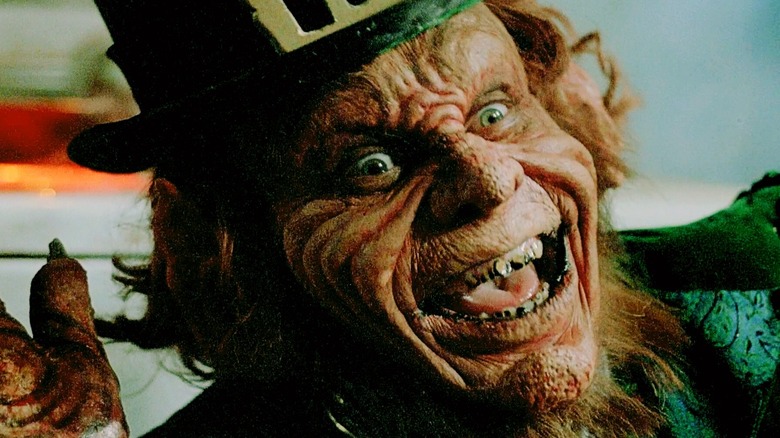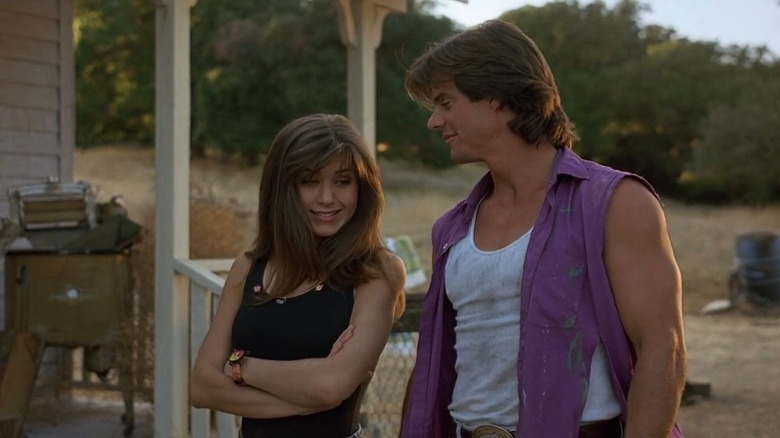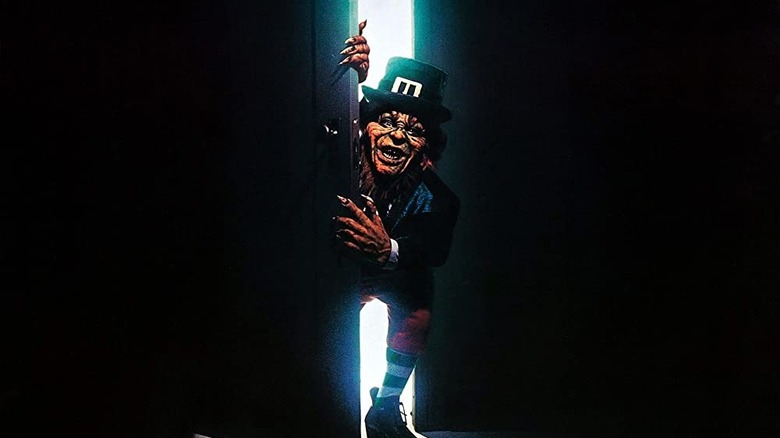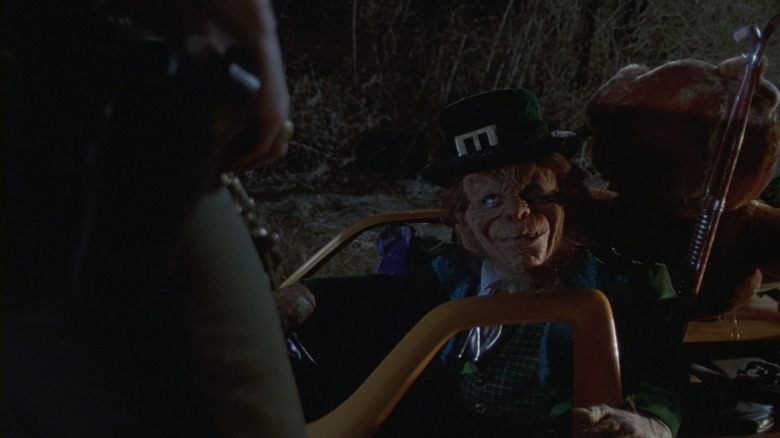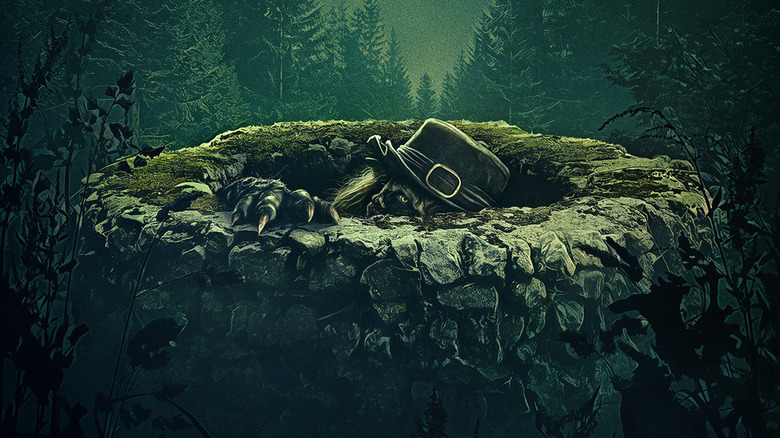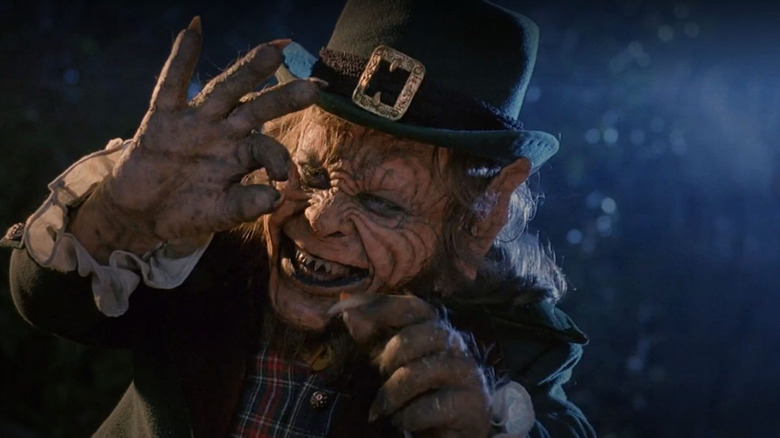Tales From The Box Office: 30 Years Ago, Leprechaun Made It Big By Keeping It Small
(Welcome to Tales from the Box Office, our column that examines box office miracles, disasters, and everything in between, as well as what we can learn from them.)
Horror has always been a fascinating genre. From a business perspective, these films can often be made very cheaply and, therefore, the bar for profitability is much lower. The returns for a horror movie might represent an utter disaster for anything even approaching the blockbuster level, but for these movies? It's money in the bank.
In the '80s and '90s — the heydays of home video — it was even easier for studios to take a horror movie concept and juice it for all it was worth with minimal theatrical support. Few franchises could showcase just how well this could be done like 1993's "Leprechaun," the first in-house production of Trimark Pictures.
The movie, for those who may not recall, centers on a terrifying Leprechaun who goes on a rampage after his gold is stolen. He uses his magic to kill anyone in his way, with a young woman named Tori (Jennifer Aniston) caught in his crosshairs. They are then in a mad scramble to find the only weapon that can kill him: a four-leaf clover. Made for a minuscule budget, it was a surprise hit (relatively speaking) that went on to spawn a series of sequels that spanned nearly three decades. It was, in many ways, the platonic ideal for crafting an enduring horror franchise in a bygone era.
In honor of the movie's 30th anniversary this week, we're looking back at "Leprechaun," how it came to be, how an impressive marketing campaign helped turn it into a hit, and what lessons we can learn from it all these years later.
The movie: Leprechaun
Mark Jones is the man behind the movie, having previously worked on TV shows like "The Fall Guy" and "The A-Team." He wanted to make the jump to movies and low-budget horror is one of the easiest pathways to make that happen. He wrote "Leprechaun," a movie that stars Warwick Davis in the lead role as a murderous take on the fantasy being. This is not the guy hiding the Lucky Charms, though Jones did actually take inspiration from commercials for the cereal.
"The Lucky Charms commercials had the cute little leprechaun advertising cereal. I said, 'We could turn this into something evil,'" Jones told Entertainment Weekly in 2014. Davis, meanwhile, was in his early 20s and had been trying, with mixed results, to carve out a career ever since he first appeared as Wicket the Ewok in "Star Wars: Return of the Jedi" a decade earlier. He had starred as the titular "Willow" five years earlier but hadn't been seen on the big screen since. Davis would be playing against type, as the antagonist, but he would also bring humor to the role, something that would be amped up during production as it seemed to be working. The movie is campy and makes no apologies about it. Davis, for his part, is not ashamed of that fact. As he told Entertainment Weekly:
"I don't think for a minute we, as filmmakers, pretend they're anything else other than entertaining popcorn movies. I would suggest people sit down with a can of beer, put their brain in the fridge, and watch the film. You don't need to think about it; you just need to enjoy it. I get tweets daily and they refer to 'Leprechaun.' It's amazing. The 'Leprechaun' films are cheesy, they're low-budget, but they have a serious following. They watch marathons on St. Patrick's Day."
Grassroots marketing gets the job done
Trimark struck a deal with Mark Jones after reading the script. The studio's founder, Mark Amin, had previously operated a successful video business, but they were looking to get more into production. That required theatrical distribution to truly get noticed. So, they were looking for something that could be made cheaply and marketed effectively. Enter "Leprechaun." Speaking in 2014, Amin said:
"That was the beginning of the video boom. So you could make movies, and release on video, and make money. But in order to build the company we had to get into production and the theatrical business. We were looking for movies that had theatrical potential, and could be made for a low budget, and would be easy to market, and would have a target audience."
In hindsight, it may seem like Jennifer Aniston, who stars as the human lead of the film, would have been a focus in the marketing. In truth, she was a complete unknown at the time as this was just before she would become a sensation in "Friends." But the marketing team still had many tricks up its sleeve.
Trimark cooked up some pretty inventive campaigns, with a leprechaun ringing the opening bell at the American Stock Exchange, for example. The studio also had a bit of an uneasy deal with Domino's Pizza. While corporate objected, with a rep saying, "It wasn't an appropriate fit for our product" at the time, the studio approached individual franchise owners. As a result, they got movie tie-ins in around 25 cities across the country, with pizza boxes adorned with coupons for free popcorn at theaters showing the film. And, wouldn't you know it, people actually showed up.
The financial journey
"Leprechaun" hit theaters on January 8, 1993, serving as the first major new movie release of the year. While it didn't exactly light the charts on fire, it did scare up $2.49 million on its opening weekend, debuting at number eight on the charts. "A Few Good Men" was in the middle of an excellent run and took the crown that weekend. But it didn't matter as Trimark was thrifty here, with the horror/comedy costing them just shy of $1 million to produce. And, though much of their marketing was clever, it wasn't exactly costly.
The movie expanded in its second weekend, given the solid grosses. In the end, it wrapped up its run with $8.5 million domestically. There was no international box office to speak of at the time. Really, its success had to do with the home video market after the fact, which has been the lifeblood of this franchise ever since. The numbers were good enough to get "Leprechaun 2" moving in a hurry, with the film coming out just 15 months later in early 1994. It, however, proved to be a disappointment theatrically, taking in just $2.2 million total.
Granted, Trimark wasn't thrilled with that, but the home video market was always there for low-budget movies. With Blockbuster and other video stores booming, this franchise had a home on those shelves. "Leprechaun 3," "Leprechaun 4: In Space," "Leprechaun: in the Hood," and "Leprechaun: Back 2 tha Hood" all enjoyed solid returns strictly from the VHS/DVD market at the time. Not to mention running on cable for years to come. And, not for nothing, but I can anecdotally tell you that I picked up a "Leprechaun" collection on Blu-ray a couple of years back on Black Friday for about $11. These things are still making money. And the budgets never climbed above $3 million.
The lessons contained within
Eventually, a reboot came calling following 2003's "Back 2 tha Hood." Co-produced by WWE Studios and Lionsgate, "Leprechaun: Origins" revived the series in 2014, only for another reboot to follow in 2018 in the form of "Leprechaun Returns." The main thing is, 25 years after the original hit theaters, Hollywood was still finding a way to cash in on this little horror flick. It's pretty impressive. Especially considering that these movies, generally speaking, have never garnered favorable reviews — quite the opposite. But the schlocky flicks have their audience, there is no doubt of that.
I am not here to argue the merits when it comes to these movies. What I am saying though is that some good decisions were made here. For one, Trimark didn't try to make an unnecessarily big splash for its first theatrical venture. They knew what worked, they knew where the risk was, and they knew where to aim. They were also incredibly clever with marketing, which turned their venture into a success. It's an example of a solidly executed business plan that got the right eyeballs on the right movie. It didn't need to find a huge audience, it just needed to find the right audience.
30 years of Leprechaun luck
Additionally, a less fun version of "Leprechaun" could have been made, one that Mark Jones kind of intended to make. But Davis brought a funny charm to the role, and it was incredibly wise of them to play that up. Again, say whatever you want, but that character resonated in some way with people, enough to generate a six-movie franchise with Davis at its center. And who knows? If Darren Lynn Bousman, of "Saw" fame, ever gets his way, we'll get yet another entry set in the old west. What does Lionsgate have to lose? Nothing, really, if they play it smart, just as the original did.
Ultimately, this is a franchise that was allowed to be a franchise because it never got too big for its britches. It stayed small and, as a result, created a recipe for success within the framework of the business as it existed at the time. The streaming era could attempt to take a page or two out of that playbook, especially as the industry reckons with its current struggles to meet subscriber and growth targets. The purse strings are going to tighten, but that just might pave the way for some creative thinking.
